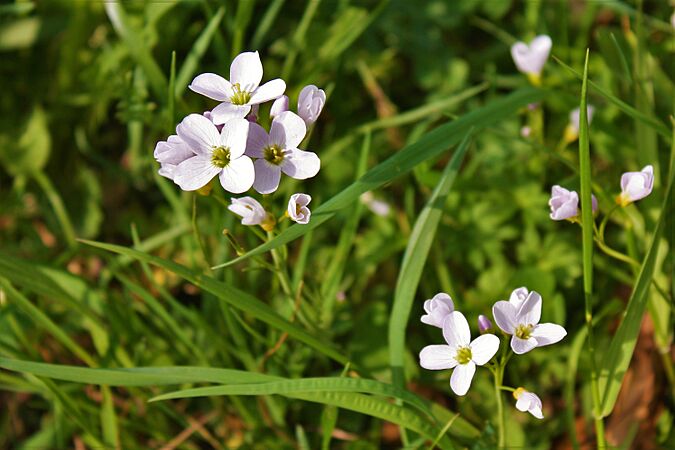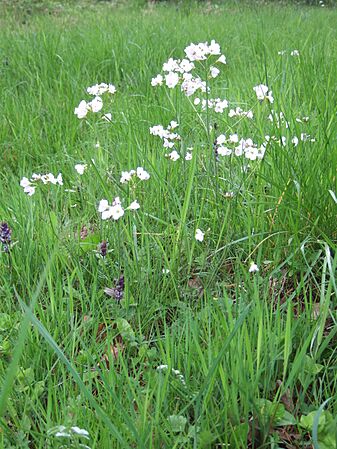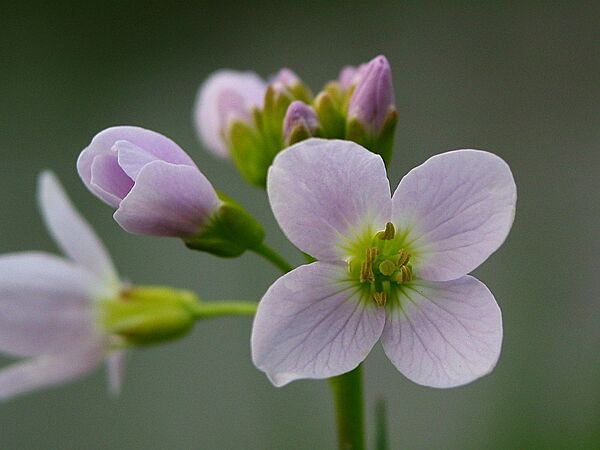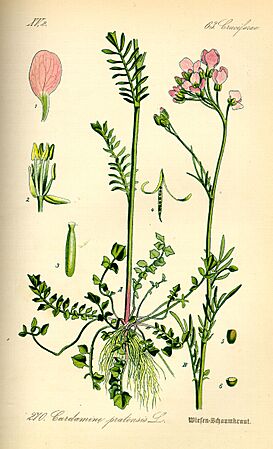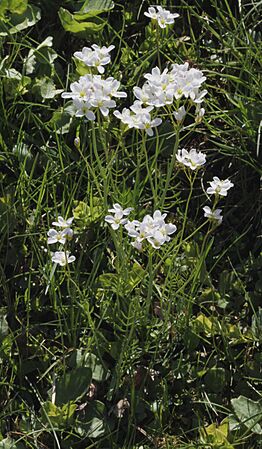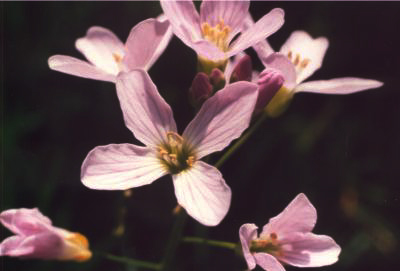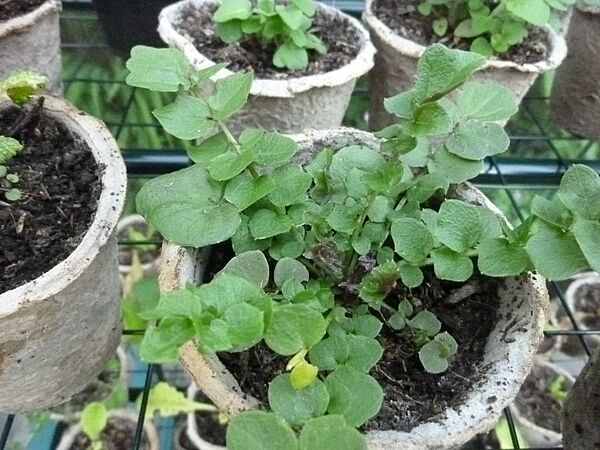Cuckoo flower facts for kids
Quick facts for kids Cuckoo flower |
|
|---|---|
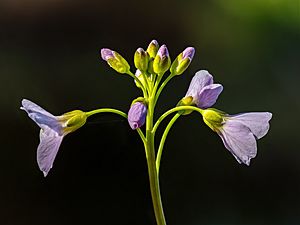 |
|
| Scientific classification | |
| Genus: |
Cardamine
|
| Species: |
pratensis
|
The Cuckoo Flower (scientific name: Cardamine pratensis) is a beautiful flowering plant. It's also known by other names like Lady's Smock or Mayflower. You can find it growing naturally across most of Europe and Western Asia. Its scientific name, pratensis, comes from Latin and means "meadow". This tells us where it often grows!
Contents
What Does the Cuckoo Flower Look Like?
The Cuckoo Flower is a perennial plant. This means it lives for more than two years. It's also a herbaceous plant, which means it has soft stems, not woody ones. It doesn't have any hairs on its stems or leaves.
These plants can grow quite tall, usually between 40 and 60 centimeters (about 16 to 24 inches). Their leaves are special because they are "pinnate." This means they have smaller leaflets arranged along a central stem, like a feather. Each leaf is about 5 to 12 centimeters long and has 3 to 15 small leaflets, each about 1 centimeter long.
The flowers grow on a tall stalk, about 10 to 30 centimeters long. Each flower is 1 to 2 centimeters wide. They usually have four petals that are a very light violet-pink color. Sometimes, you might even see white ones! Cuckoo Flowers grow best in wet places, often near water.
Why Is It Called the Cuckoo Flower?
The common name cuckooflower is quite interesting! It got this name because its flowers usually appear around the same time each spring. This is when the first cuckoos arrive in places like the British Isles. So, the flower's blooming time matches the cuckoo's return!
Are There Different Types of Cuckoo Flowers?
Yes, there are slightly different types of Cuckoo Flowers. One example is Cardamine pratensis subsp. paludosa. It's a close relative of the main Cuckoo Flower.
Where Can You Find Cuckoo Flowers?
You can commonly find Cuckoo Flowers growing all over the British Isles. In Ireland, for example, it has been recorded in all 40 "vice-counties." These are special areas used by scientists to track where plants and animals are found.
How Are Cuckoo Flowers Used?
Cuckoo Flowers are often grown in gardens as ornamental plants. This means people grow them because they are pretty to look at. Because of this, they have started growing naturally in North America too, after being brought there by people. However, in some parts of Europe, like Germany, these plants are now becoming rare.
This plant is also very important for wildlife! It's a food source for the caterpillars of the orange tip butterfly. If you want to attract butterflies to your garden, planting Cuckoo Flowers is a great idea. Long ago, people even used Cuckoo Flowers as a substitute for watercress in their food.
What Does Folklore Say About Cuckoo Flowers?
In old stories and beliefs, Cuckoo Flowers were thought to be special to the fairies. Because of this, people believed it was bad luck to bring them inside a house. For the same reason, they were not usually included in May Day garlands, which are wreaths of flowers used for celebrations.
Other Interesting Facts About Cuckoo Flowers
The Cuckoo Flower is the official county flower of Cheshire, an English county.
Gallery
See also
 In Spanish: Berro de prado para niños
In Spanish: Berro de prado para niños


